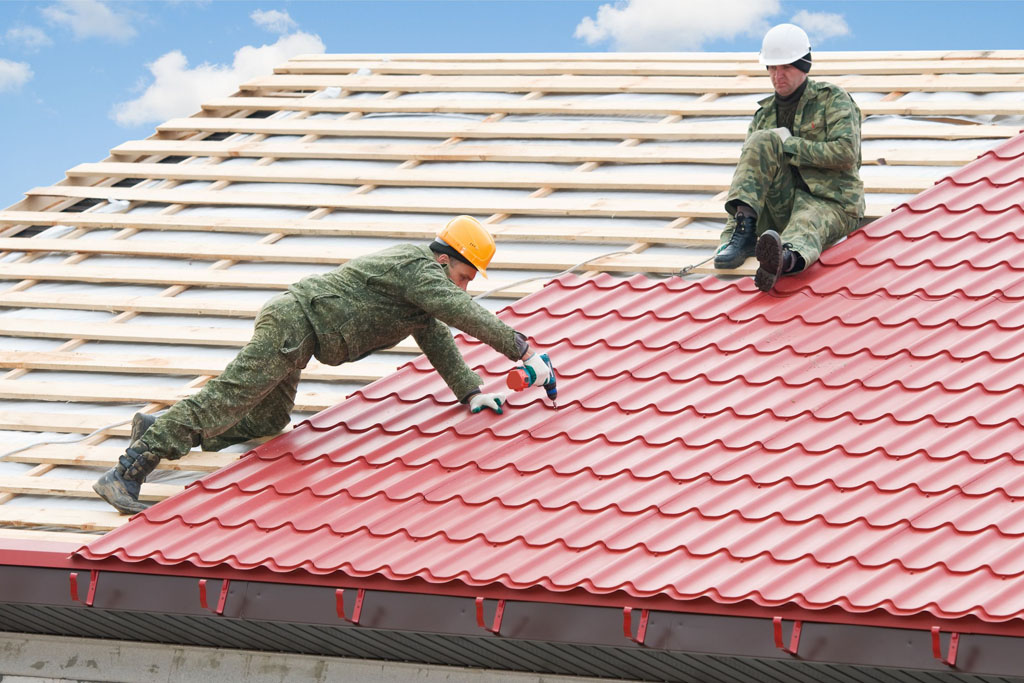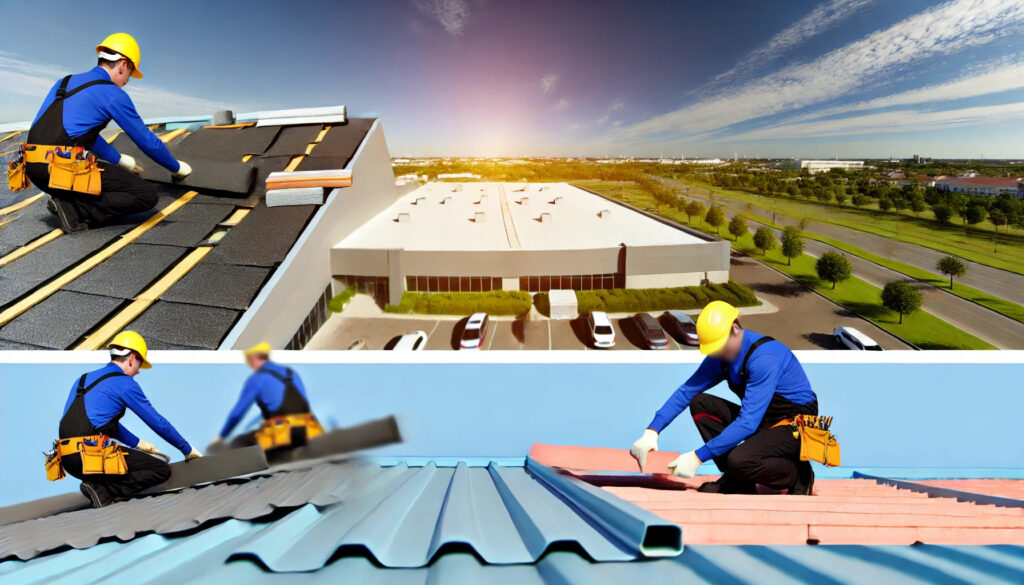A Comprehensive Overview to Effective Roof Flat Roof Installment
The details of level roofing system installation need a thorough technique, beginning with an extensive understanding of various level roofing types and the important products needed for ideal performance. An effective setup hinges not just on the option of materials but additionally on the preparation and execution of each action included in the process. As we discover the important stages from prep work to upkeep, it becomes obvious that overlooking even small information can dramatically impact the roofing system's longevity and performance. What certain techniques can ensure a seamless installation that stands up to the test of time?
Recognizing Flat Roofing Kind
When taking into consideration flat roofings, it is essential to understand the various types offered, as each offers unique advantages and downsides customized to certain requirements. One of the most typical sorts of level roofings consist of Built-Up Roof (BUR), Customized Bitumen, and Single-Ply membranes.
Built-Up Roofing includes multiple layers of asphalt and gravel, offering excellent sturdiness and weather condition resistance. It is especially advantageous in areas vulnerable to severe weather condition problems but may need even more maintenance due to its intricate building.
Changed Asphalt is a preferred option for its convenience of installation and flexibility. It frequently employs a self-adhesive or torch-applied approach, which can be helpful for quick repairs and lasting performance. However, its life-span can be much shorter compared to BUR.
Single-Ply membrane layers, including Thermoplastic Olefin (TPO) and Ethylene Propylene Diene Monomer (EPDM), are identified for their lightweight nature and power performance. These materials are often favored for industrial structures because of their cost-effectiveness and convenience of setup (Cleveland Roofing Specialists). They might not offer the very same level of insulation as various other options.
Each roof type needs mindful consideration based upon climate, budget plan, and specific job needs.
Vital Materials for Flat Roof Covering
A variety of necessary materials are important for the effective installation of level roof. The selection of materials directly effects resilience, efficiency, and overall efficiency.
Among the key materials is the roof membrane layer, which can be constructed from different materials such as thermoplastic polyolefin (TPO), ethylene propylene diene monomer (EPDM), or PVC. Each type uses one-of-a-kind advantages, including UV resistance and adaptability, which are vital for extended efficiency.
In enhancement to the membrane, insulation materials play a substantial duty in energy effectiveness. Inflexible foam boards or polyisocyanurate insulation are popular options, as they provide outstanding thermal resistance and wetness monitoring.
Furthermore, roofing adhesives and sealants are necessary for guaranteeing a leak-proof installment. These products need to work with the picked membrane layer to protect against wear and tear in time.
Planning For Installment
Proper preparation is vital for a successful level roof covering setup, as it lays the groundwork for a efficient and durable roof covering system. Begin by performing a detailed examination of the existing roofing system framework.
Following, gather all essential tools and products, making sure that they meet sector standards. This consists of water resistant membrane layers, insulation, flashing, and bolts. Familiarize on your own with the producer's specifications, as adherence to these standards is crucial for service warranty purposes.
Take into consideration weather conditions; prevent setup throughout hefty rainfall or severe temperature levels, which can influence material performance. By taking these preparatory steps, you can enhance the possibility of a successful flat roofing installment that fulfills both architectural and visual needs.
Step-by-Step Installment Refine
With the foundation developed through complete prep work, the next phase includes carrying out the flat roofing system setup systematically. Begin by guaranteeing that the structural deck is totally free and clean from debris. Next, set up a vapor barrier to stop dampness accumulation below the roof product. This action is crucial for preserving the roofing's integrity in time.
Following the vapor obstacle setup, set insulation boards, ensuring they fit snugly with each other to decrease thermal connecting. Secure the insulation with appropriate bolts based on the roof covering kind and local structure codes. Once the insulation remains in place, it's time to use the roofing membrane layer. Depending on the picked material-- such as TPO, EPDM, or changed bitumen-- install the membrane according to the supplier's specs.
Ensure correct overlap at edges and seams to create a watertight seal. Utilize adhesives, mechanical fasteners, or warm welding as needed. Lastly, install blinking around borders, vents, and any roof infiltrations to improve waterproofing. After installation, conduct a thorough examination to determine any possible problems prior to wrapping up the project, making certain a durable and dependable flat roof covering system.
Upkeep Tips for Longevity
Regular upkeep is important to make sure the long life and efficiency of a level roof. One of the main jobs is to conduct regular evaluations at the very least twice a year, ideally in spring and fall. Throughout these examinations, try to find signs of wear, such as blisters, fractures, or pooling water, which can indicate underlying concerns.

Making certain proper water drainage is essential to protect against water build-up. Examine and clear gutters, downspouts, and scuppers to assure unhampered water flow. Additionally, check seals around vents, skylights, and various other infiltrations for any type of indications of damage, applying caulk or sealer as needed to keep a water tight barrier.
Lastly, take into consideration professional upkeep services every couple of years for extensive inspections and repairs. By sticking to these upkeep pointers, you can significantly extend the life of your level roofing, guaranteeing it remains a https://www.roofingcuyahogafallsoh.com trustworthy guard against the elements.
Conclusion
Reliable flat roof installment requires an organized technique including thorough assessments, product selection, and thorough prep work. Sticking to the outlined actions during the installation procedure guarantees the proper application of roof covering membranes and insulation while enhancing waterproofing with effective flashing installment.
The ins and outs of level roof covering installation demand a thorough technique, beginning with a detailed understanding of numerous level roof covering kinds and the vital products required for optimum performance.Correct prep work is important for a successful flat roofing installment, as it lays the foundation for a durable and effective roof system. After setup, carry out a comprehensive assessment to determine any kind of possible problems before wrapping up the job, making sure a dependable and robust level roof covering system.
